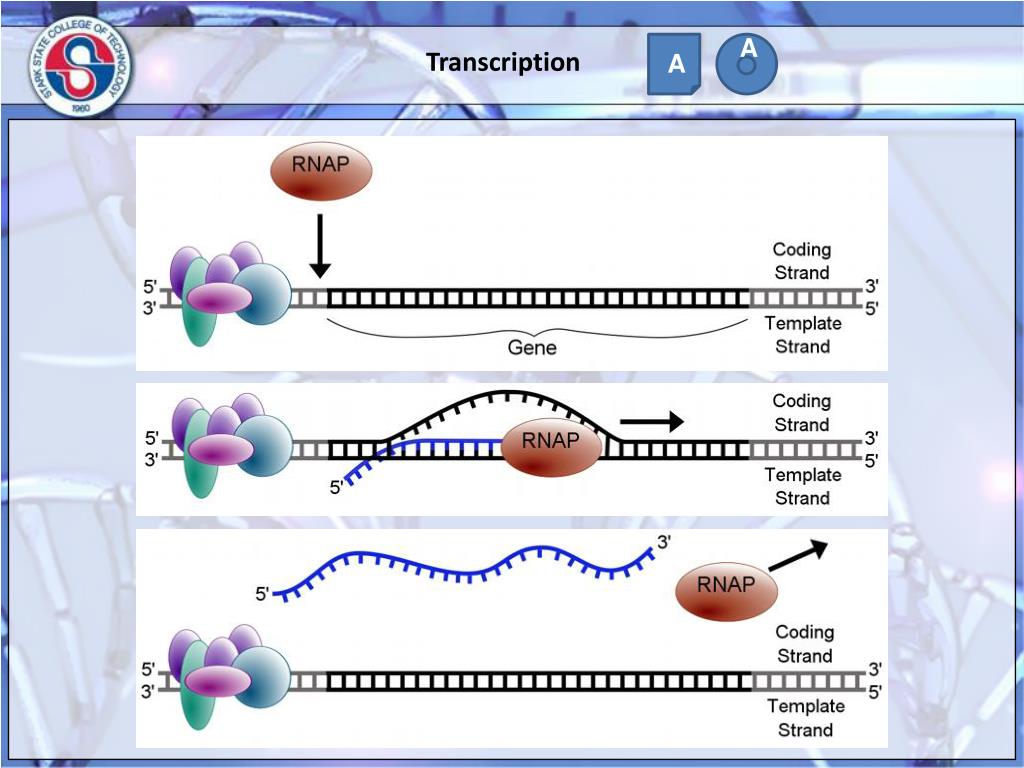

#TRANSCRIBE AND TRANSLATE DNA FREE#
Strangely, DNA polymerases cannot initiate DNA synthesis de novo, but require a short primer with a free 3'-hydroxyl group. Bacteria have at least three distinct DNA polymerases: Pol I, Pol II and Pol III it is Pol III that is largely involved in chain elongation. The resulting short strands are called Okazaki fragments (after their discoverers, Reiji and Tsuneko Okazaki). The leading strand is synthesized continuously but the opposite strand is copied in short bursts of about 1000 bases, as the lagging strand template becomes available. A portion of the double helix must first unwind, and this is mediated by helicase enzymes. This makes it impossible for DNA polymerases to synthesize both strands simultaneously. The Central Dogma of Molecular Biology states that DNA makes RNA makes proteins ( Figure 1).ĭNA replication in bacteria Simplified representation of DNA replication in bacteriaĭNA biosynthesis proceeds in the 5'- to 3'-direction.

This is a fascinating subject that is certain to advance rapidly over the next few years. Some of this non-coding DNA controls gene expression but the purpose of much of it is not yet understood. The nucleotide sequence of the human genome is now known to a reasonable degree of accuracy but we do not yet understand why so much of it is non-coding.

These regions are called introns and make up around 95% of the genome.
#TRANSCRIBE AND TRANSLATE DNA CODE#
Large stretches of DNA in the human genome are transcribed but do not code for proteins. The human genome contains around 30 000 genes, each of which codes for one protein. This is known collectively as the human genome. In humans, the nucleus of each cell contains 3 × 10 9 base pairs of DNA distributed over 23 pairs of chromosomes, and each cell has two copies of the genetic material. It is so important that it is sometimes called the “central dogma.The genetic material is stored in the form of DNA in most organisms. The flow of information from DNA to RNA to proteins is one of the fundamental principles of molecular biology. Protein assembly continues until the ribosome encounters a “stop” codon (a sequence of three nucleotides that does not code for an amino acid). (Amino acids are the building blocks of proteins.) A type of RNA called transfer RNA (tRNA) assembles the protein, one amino acid at a time. Each sequence of three nucleotides, called a codon, usually codes for one particular amino acid. The mRNA interacts with a specialized complex called a ribosome, which "reads" the sequence of mRNA nucleotides. Translation, the second step in getting from a gene to a protein, takes place in the cytoplasm. The type of RNA that contains the information for making a protein is called messenger RNA (mRNA) because it carries the information, or message, from the DNA out of the nucleus into the cytoplasm. Both RNA and DNA are made up of a chain of building blocks called nucleotides, but they have slightly different chemical properties. Together, transcription and translation are known as gene expression.ĭuring the process of transcription, the information stored in a gene's DNA is passed to a similar molecule called RNA (ribonucleic acid) in the cell nucleus. It consists of two major steps: transcription and translation. (A few genes produce regulatory molecules that help the cell assemble proteins.) The journey from gene to protein is complex and tightly controlled within each cell. Most genes contain the information needed to make functional molecules called proteins.


 0 kommentar(er)
0 kommentar(er)
